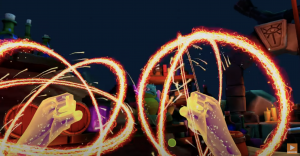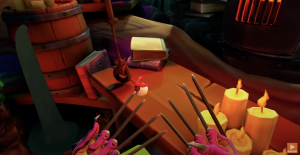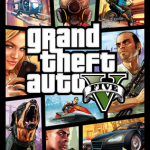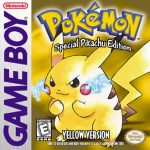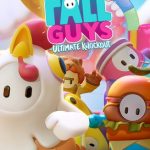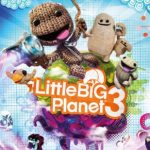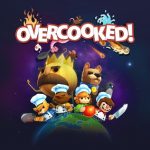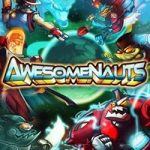Intellectual production #6
Race, Sexuality, and Videogames
Intellectual production #8 – revised
Game Design 101
Original submission: Intellectual production #8
1.3: Your life as a game
List five areas of your life that could be games. Then briefly describe a possible underlying game structure for each. (Fullerton, 2019, p. 9)
These are the games I play concurrently.
Speed cleaning
 A timed challenge where the player cleans up their home. Sound effects play as the player completes in-game mini quests; the sounds are often loud, and water sounds are common. It’s a slightly different challenge with different quests in every game, and the cleanliness of the home at the end of the game translates into the amount of health available for the next mini-games. In other words, if the player wins the game, they start their next games with full stats; alternatively, if the player loses the game, they start their next games with reduced stats. (I like to have all the chores done before I start my workday, which means I speed-clean for about 10 minutes every morning. I find that the cleaner my apartment is, the better I feel about starting my day, which then translates into my ability to focus at work.)
A timed challenge where the player cleans up their home. Sound effects play as the player completes in-game mini quests; the sounds are often loud, and water sounds are common. It’s a slightly different challenge with different quests in every game, and the cleanliness of the home at the end of the game translates into the amount of health available for the next mini-games. In other words, if the player wins the game, they start their next games with full stats; alternatively, if the player loses the game, they start their next games with reduced stats. (I like to have all the chores done before I start my workday, which means I speed-clean for about 10 minutes every morning. I find that the cleaner my apartment is, the better I feel about starting my day, which then translates into my ability to focus at work.)
Taking care of houseplants
 A slower-paced but continuous game where the player maintains the health stats of numerous ‘houseplant’ objects. This includes activities like watering, dusting, rotating, and repotting. If the player fails to complete the activities for a plant within the required timeframe, the health stat for the plant will reduce and visually the plant will droop and/or turn yellow. The player may also choose to acquire additional ‘houseplant’ objects at any time; additional houseplants can increase the player’s ‘happiness’ and ‘oxygen’ stats, however it also increases the level of difficulty in balancing the health stats for all ‘houseplant’ objects.
A slower-paced but continuous game where the player maintains the health stats of numerous ‘houseplant’ objects. This includes activities like watering, dusting, rotating, and repotting. If the player fails to complete the activities for a plant within the required timeframe, the health stat for the plant will reduce and visually the plant will droop and/or turn yellow. The player may also choose to acquire additional ‘houseplant’ objects at any time; additional houseplants can increase the player’s ‘happiness’ and ‘oxygen’ stats, however it also increases the level of difficulty in balancing the health stats for all ‘houseplant’ objects.
Enrolling in courses
 A multiplayer game where each player must attempt to, as fast as possible, refresh the course registration page at a certain time and get a spot in one of the 23 available spaces per course. In other words, there will be 23 winners per course. Those who lose can choose to add themselves to the waitlist and hope that a spot becomes available if another player exits the course, or alternatively they can reattempt in the next round. This incredibly nerve-racking game is available twice a year, and the next round happens on February 13, 2023. Each player must win 10 and complete courses to the acquire the tome of education.
A multiplayer game where each player must attempt to, as fast as possible, refresh the course registration page at a certain time and get a spot in one of the 23 available spaces per course. In other words, there will be 23 winners per course. Those who lose can choose to add themselves to the waitlist and hope that a spot becomes available if another player exits the course, or alternatively they can reattempt in the next round. This incredibly nerve-racking game is available twice a year, and the next round happens on February 13, 2023. Each player must win 10 and complete courses to the acquire the tome of education.
Making money
 A game where the player gains currency by completing quests as part of a guild. Conditions include:
A game where the player gains currency by completing quests as part of a guild. Conditions include:
-
- Interaction: The quests are typically cooperative play where each player takes on certain responsibilities within each quest.
- Character: The character chosen by the player may impact how the player earns currency. For example, if the ‘Salesperson’ character is chosen, the success of each quest may translate directly into the percentage of currency earned. Alternatively, for some other characters, the amount of currency earned per month is set, as long as the player adequately completes their quests. In any case, each player is responsible for gaining their own currency.
- Completing quests: The more information the player has on the state of the system, the more likely the player would be able to successfully complete quests. The player will receive feedback from another player on how well the player is completing tasks; the other player is typically the one using the ‘Manager’ character.
- Players may be kicked out of guilds: Reasons to be kicked out of a guild include the player not completing required quests, the guild having too many players, and disagreements among players. If the player is kicked out of a guild, they must find another guild to continue gaining currency.
- Using currency: Currency is used to acquire items such as food, clothes, and a home, all of which are critical to the wellbeing of the player’s character. Additional currency may be used to acquire other inventory and power-ups, but cannot be used to acquire additional lives.
- Gaining currency faster: To increase the possibility of gaining currency faster, the player can either consistently exceed the requirements to complete quests or acquire the tome of education. To acquire the tome of education, the player’s knowledge stats increases, which allows the player to take on more challenging quests at their guild.
Taking care of myself
 A Tamagotchi-like game where the player has to monitor their character’s ‘wellbeing’ stats and take action as needed. These stats include hydration, hunger level, stress level, physical health, and quality and quantity of rest. If the player fails to address an issue with one of the stats, it negatively impacts all of the other stats, as well as reduces the stats for all of the other games above. This game is also available in multiplayer mode, where the player can decide to partner with other players of their choosing to contribute to improving one another’s stats.
A Tamagotchi-like game where the player has to monitor their character’s ‘wellbeing’ stats and take action as needed. These stats include hydration, hunger level, stress level, physical health, and quality and quantity of rest. If the player fails to address an issue with one of the stats, it negatively impacts all of the other stats, as well as reduces the stats for all of the other games above. This game is also available in multiplayer mode, where the player can decide to partner with other players of their choosing to contribute to improving one another’s stats.
Reflection/thought for my group project
These activities seem more fun to me as games than they actually are in real life. I wonder if it is because the idea of games implies that the game can be reset if the player is failing, and the player could try again with the knowledge and skills they built in their last round. This makes me think about how we can leverage “failure states” in our group project to enhance learning (Powers & Moore, 2021, p. 615).
Additionally, upon considering the “underlying systems” and relationships across these ‘games’ (Fullerton, 2019, p. 9), it makes it especially clear to me how my ‘stats’ and elements are dependent on one another, which increases the challenge and motivation for all ‘games’ at the same time. Taking from this, I will want to thoughtfully consider the relationships across the stats in our group project to incorporate this sense of challenge and motivation.
2.3: Objectives
List five games, and in one sentence per game, describe the objective in each game. (Fullerton, 2019, p. 34)
-
- Gran Turismo 7: Win driving races on different race tracks around the world to earn money and increasingly higher-performing cars; the money allows you to tune up cars to increase your chances of winning the races, and certain higher-performing cars will grant you access to special race tracks.
- Awesomenauts: Get to the enemy team’s base by destroying their defenses, while protecting your own team’s defenses and base from the enemy team; defeat enemies to win coins, which you can then use to level up the stats of your character, which increases your chances of defeating enemies and defenses faster.
- XCOM: Defend earth from alien invasions by managing the defense organization and commanding its soldiers in combat; you gain knowledge of the aliens as your soldiers engage in combat with them, which enables you to better focus your research at the command centre to help you defend earth from the invasion.
- Overcooked: Prepare food ordered by customers, either by working collaboratively with other players or controlling two characters at the same time; you will need to earn a certain amount of money per round to win the level and progress to the next one.
- Pokemon Yellow: Become the best Pokemon trainer by traveling across towns to catch Pokemon and use them in battle; win battles against Pokemon gym leaders at Pokemon gyms to earn badges.
Reflection/thought for my group project
As I look at these objectives, I see that these games, as with many other games, focus on solving problems, building skills, and improving as the player progresses. How might we design for progression in our group project, ensuring the progression is “challenging … but achievable … to the players” (Fullerton, 2019, p. 68)? How will this be reflected in the objective of our game?
2.8: Story
Have any stories within a game ever gripped you, moved you emotionally, or sparked your imagination? If so, why? If not, why not? (Fullerton, 2019, p. 46)

(Meta Quest, n.d.)
The plot of Elixir, perfectly supported by its interactions, stuck with me. Elixir is a virtual reality (VR) hand tracking game, which means the player interacts with the game using the movement of their hands. In Elixir, the player is a human who is starting a role as the apprentice of a sorceress, and the sorceress guides the player in using magic with their hands.
Elixir was my first hand tracking game. I found the hand tracking to be seamless (i.e., not buggy, no lagging), which enabled a fully immersive experience where I could focus on the story.
(Vizm, 2021)
I was beyond fascinated when I learned to use fire and electricity with my hands, and shocked when my fingers briefly turned into tentacles–it all felt so real. After my first time playing, I recall being momentarily confused when I remembered I couldn’t do magic with my hands in real life. It made me think of Bandura’s concept of self-efficacy as “contributors to performance” and how VR can be used in training to “buil[d] muscle memory” (Bandura, 2012; Farrell, 2018, p. 26). In my mind, I had learned to do magic.
Reflection/thought for my group project
The boundaries between the game and real world seemed to blur for me when I played this hand tracking game. Specifically, the game takes place in the what Huizinga (1955) might refer to as the “temporary world” of the “magic circle” (Huizinga, 1955, as cited in Fullerton, 2019, p. 37), however the game was designed so that the player uses their actual body to control the temporary world, effectively blurring the boundaries between the magic circle and the real world, making for an incredibly immersive experience.
What are some other ways to increase immersion in the design of a game? For example, how might we “integrat[e] [our story] with play … [to] create powerful emotional results” and increase immersion (Fullerton, 2019, p. 46), so that our players can focus on the story and the learning?
3.3: Interaction patterns
For each of the interaction patterns, create a list of your favorite games in each pattern. If you can’t think of any games in a particular pattern, research games in that area and play several of them. (Fullerton, 2019, p. 64)
Note: If a game has modes in multiple patterns, I listed it under my favourite mode.
Single player versus game
(Gran Turismo 7, 2023; Grand Theft Auto V, 2023; Beat Saber, 2023; Meta Quest, n.d.; XCOM: Enemy Unknown, 2023; RollerCoaster Tycoon (video game), 2023; Pokemon, n.d.)
Link(s) to game page(s): Gran Turismo 7, Grand Theft Auto V, Beat Saber, Elixir, XCOM, RollerCoaster Tycoon, Pokemon Yellow
Multiple individual players versus game
(Kahoot, 2023)
Link(s) to game page(s): Kahoot!
Player versus player
(Jackbox Games, n.d.; Monopoly, 2023; BoardGameGeek, n.d.)
Link(s) to game page(s): Awesomenauts, Quiplash 2, Monopoly, Cryptid
Unilateral competition
(Bomberman Party Edition, 2022)
Link(s) to game page(s): (N/A)
Multilateral competition
(Fall Guys, 2023)
Link(s) to game page(s): Fall Guys
Cooperative play
(LittleBigPlanet 3, 2023; Overcooked, 2023; Streets of Rage 2, 2023)
Link(s) to game page(s): LittleBigPlanet 3, Overcooked, Streets of Rage 2
Team competition
(Mattel, n.d.; Awesomenauts, 2023)
Link(s) to game page(s): Pictionary
Reflection/thought for my group project
It looks like I gravitate towards ‘single player versus game’ games, followed by ‘player versus player’ and ‘cooperative play’ games. How might this influence my perception of games, and how can I be more mindful of this perception as I approach the design of our group project? How can we design our game in consideration of the learning that occurs within the game, in affinity spaces related to the game, in “distributed teaching and learning systems” related to the game (Gee & Gee, 2017, p. 1), and in the broader context of all learning experiences? In other words, how will we intentionally define the context of our game for our players?
3.9: Resource Types
For each of the resource types just described, create a list of your favorite games that use resources of that type. If you can’t think of any games that use a particular type of resource, research games that do and play several of them. (Fullerton, 2019, p. 85)
| Resource | Example |
|---|---|
| Lives |
|
| Units |
|
| Health |
|
| Currency |
|
| Actions |
|
| Power-ups |
|
| Inventory |
|
| Special terrain |
|
| Time |
|
Reflection/thought for my group project
As I’m looking at this list, I realize it reflects my preferences in real life. I don’t have the patience for turn-based activities and I don’t appreciate time constraints; I enjoy power-ups that enhance my life (e.g., smart lights, voice-activated trash cans, automatic soap dispensers) and I’m intentional about how I build my “inventory” (e.g., work, school, home). How might my preferences influence my approach to our group project? What are the preferences of my group members? How might these preferences show up in our discussions on game design?
References
Awesomenauts [Image]. (2023, January 23). In Wikipedia. https://en.wikipedia.org/w/index.php?title=Awesomenauts&oldid=1135264586
Bandura, A. (2012). Social cognitive theory. In P. A. M. van Lange, A. W. Kruglanski, & E. T. Higgins (Eds.), Handbook of theories of social psychology: Volume 1 (pp. 349-373). Sage. http://dx.doi.org/10.4135/9781446249215.n18
Beat Saber [Image]. (2023, February 2). In Wikipedia. https://en.wikipedia.org/w/index.php?title=Beat_Saber&oldid=1137028349
BoardGameGeek. (n.d.). Cryptid. https://boardgamegeek.com/boardgame/246784/cryptid
Bomberman Party Edition [Image]. (2022, September 10). In Wikipedia. https://en.wikipedia.org/w/index.php?title=Bomberman_Party_Edition&oldid=1109472645
Fall Guys [Image]. (2023, February 2). In Wikipedia. https://en.wikipedia.org/w/index.php?title=Fall_Guys&oldid=1137041790
Farrell, W. A. (2018). Learning becomes doing: Applying augmented and virtual reality to improve performance. Performance Improvement, 57(4), 19-28. https://dx.doi.org/10.1002/pfi.21775
Fullerton, T. (2019). Game design workshop: A playcentric approach to creating innovative games. Taylor & Francis.
Gee, E., & Gee, J. P. (2017). Games as distributed teaching and learning systems. Teachers College Record, 119(11). https://doi.org/10.1177/016146811711901202
Gran Turismo 7 [Image]. (2023, February 5). In Wikipedia. https://en.wikipedia.org/w/index.php?title=Gran_Turismo_7&oldid=1137575656
Grand Theft Auto V [Image]. (2023, January 23). In Wikipedia. https://en.wikipedia.org/w/index.php?title=Grand_Theft_Auto_V&oldid=1135299753
Jackbox Games. (n.d.). Quiplash 2 [Image]. https://www.jackboxgames.com/quiplash-two/
Kahoot [Image]. (2023, February 2). In Wikipedia. https://en.wikipedia.org/w/index.php?title=Kahoot!&oldid=1137098441
LittleBigPlanet 3 [Image]. (2023, January 16). In Wikipedia. https://en.wikipedia.org/w/index.php?title=LittleBigPlanet_3&oldid=1134069778
Mattel. (n.d.) Pictionary board game for kids, adults and family night, drawing game [Image]. https://shop.mattel.com/products/pictionary-gmt97
Meta Quest. (n.d.). Elixir [Screenshot by Jocelyn Chan]. https://www.oculus.com/experiences/quest/3793077684043441/
Monopoly (game). (2023, February 19). In Wikipedia. https://en.wikipedia.org/w/index.php?title=Monopoly_(game)&oldid=1140272427
Overcooked [Image]. (2023, February 3). In Wikipedia. https://en.wikipedia.org/w/index.php?title=Overcooked&oldid=1137301481
Pokemon. (n.d.). Pokémon Yellow Special Pikachu Edition [Image]. https://www.pokemon.com/us/pokemon-video-games/pokemon-yellow-special-pikachu-edition/
Powers, F. E., & Moore, R. L. (2021). When failure is an option: A scoping review of failure states in game-based learning. TechTrends, 65(4), 615-625. https://doi.org/10.1007/s11528-021-00606-8
RollerCoaster Tycoon (video game) [Image]. (2023, January 8). In Wikipedia. https://en.wikipedia.org/w/index.php?title=RollerCoaster_Tycoon_(video_game)&oldid=1132448680
Streets of Rage 2 [Image]. (2023, January 31). In Wikipedia. https://en.wikipedia.org/w/index.php?title=Streets_of_Rage_2&oldid=1136745637
Vizm. (2021, March 19). Elixir VR hand tracking full walkthrough [no commentary] 1080p 60fps [Screenshots by Jocelyn Chan]. YouTube. https://www.youtube.com/watch?v=6mQjhq1Zk2M
XCOM: Enemy Unknown [Image]. (2023, January 16). In Wikipedia. https://en.wikipedia.org/w/index.php?title=XCOM:_Enemy_Unknown&oldid=1134028860


